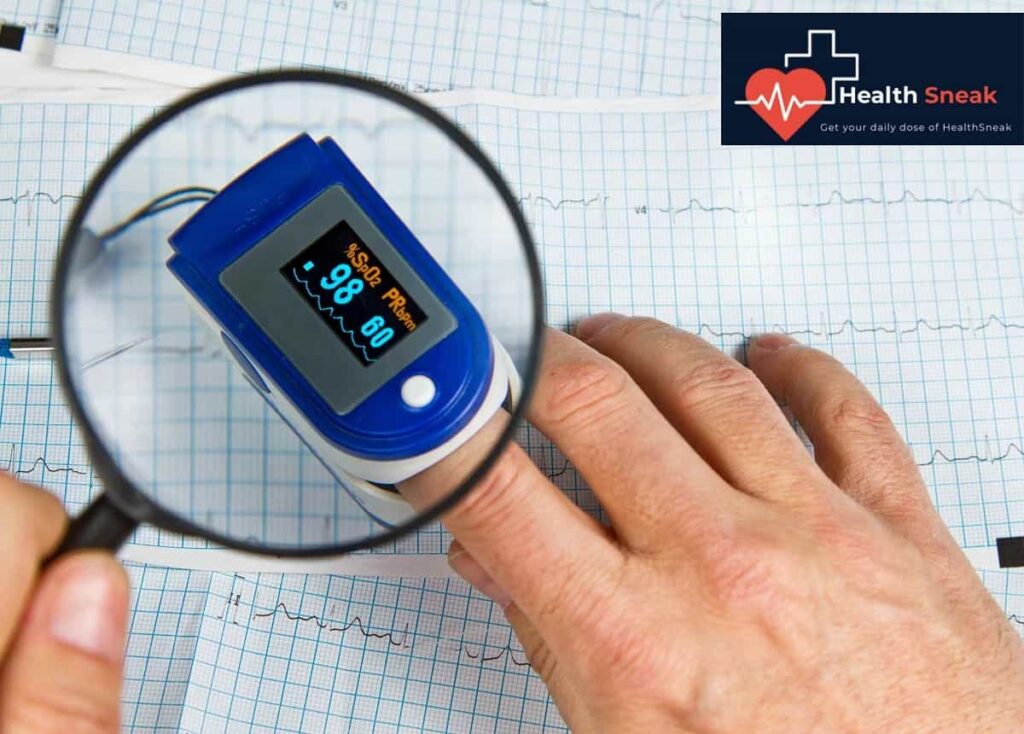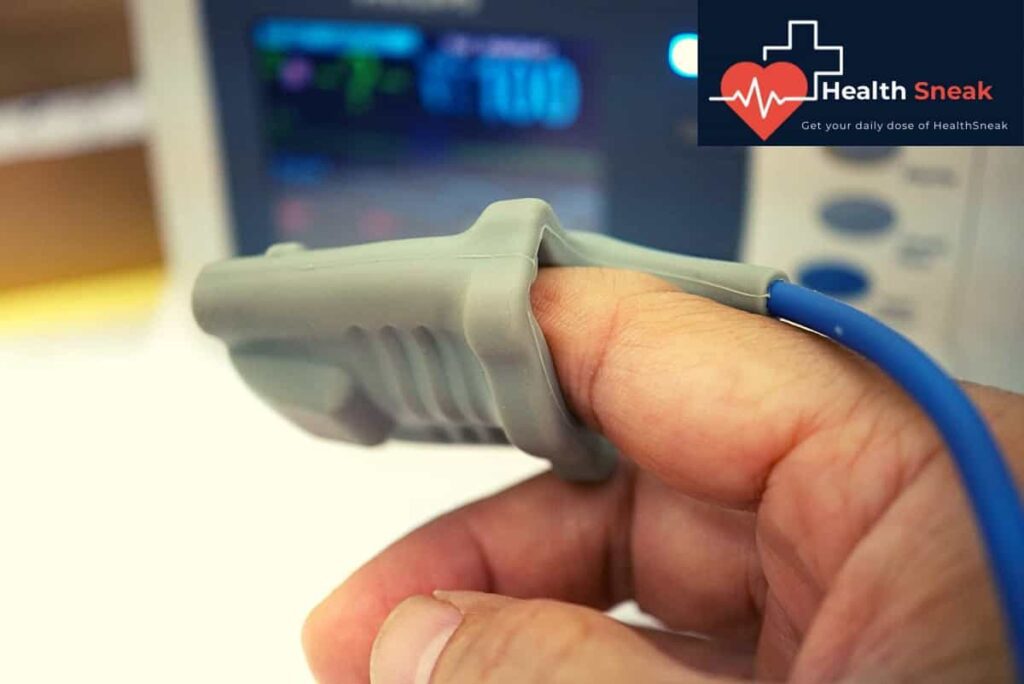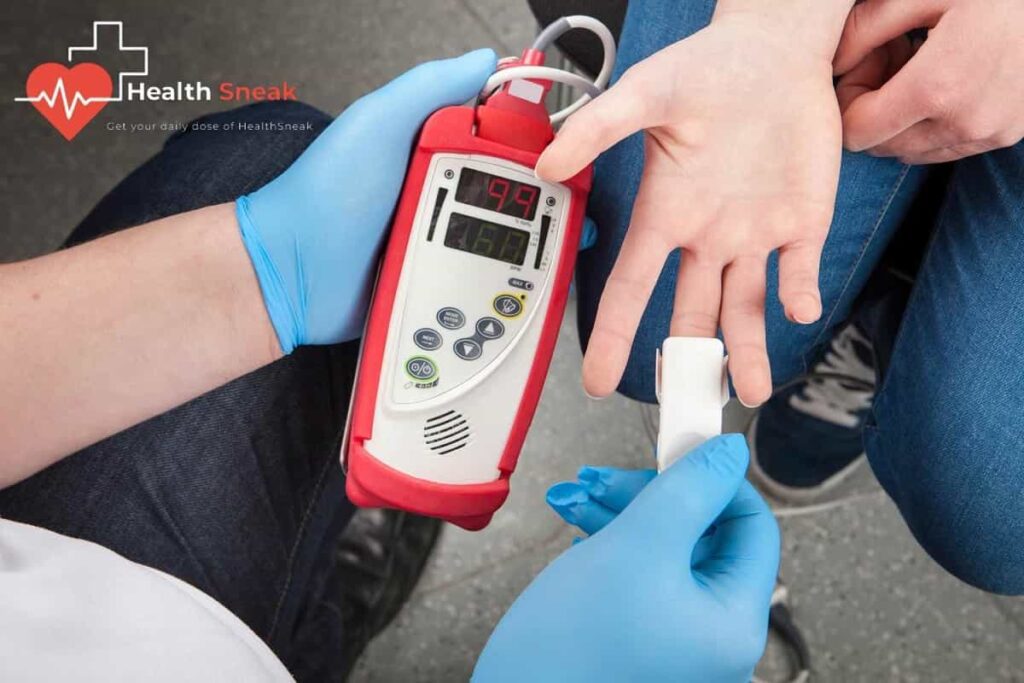Introduction to Pulse Oximeter
A Pulse Oximeter is a piece of equipment used to measure the oxygen saturation of hemoglobin in a person’s blood. It is a non-invasive tool. It comes in the form of a finger clip, a single-use disposable probe, a respiration sensing device, or a non-invasive sensor. Values in the form of a percentage are read on a monitor after a short wait. In medicine, pulse oximeters are commonly used in hospital operating rooms and intensive care units to monitor the oxygenation of the blood in patients who cannot breathe independently. In healthy adults, the oxygen saturation is generally between 95% and 99%, and in healthy children, it is typically between 97% and 99%. Different types of pulse oximeters measure different components of oxygen saturation.
Types of Oximeter
- Miniature Oximeter
- Portable Oximeter
- Handheld Oximeter
- Finger Pulse Oximeter
- Non-invasive Pulse Oximeter
- Invasive Pulse Oximeter
What is Pulse Oximeter?
Pulse Oximeters have been a staple of the patient’s recovery process for many years. In the emergency room and at home. It is a valuable tool to measure a patient’s oxygen saturation. The pulse oximeter monitors how much oxygen is in your blood and how your heart functions and are often used to monitor sleep apnea and cardiac issues such as sleep apnea.
Information from the pulse oximeter is monitored and displayed on a handheld device to alert users of any changes. An example of a pulse oximeter is the Finger Pulse Oximeter. This device uses either a fingertip or earlobe and only two sensors. The fingertip should be lightly pressed and flat against the sensor, or you should press the ear with an oximeter sensor. The user will need to breathe deeply during this process and not talk or move for 20 seconds.
Use of Pulse Oximeter
Pulse Oximeters can be used in many different clinical settings. Typically, they are used to assess the oxygen saturation levels of hemoglobin in arterial blood. A pulse oximeter can be placed on a patient’s index and middle fingers. The device will detect the amount of oxygen in the blood and calculate the oxygen saturation of arterial blood.
How does pulse oximeter works?
A pulse oximeter sends out light through the patient’s blood cells and measures the light bounced back with each heartbeat. A pulse oximeter works by passing a red and infrared light beam through a pulsating capillary. The sensor detects the ratio of infrared light beam.
Choosing a Pulse Oximeter
The manufacturer labels Pulse oximeters with terms like ‘for medical use,’ and ‘FDA approved,’ which you should be looking for when purchasing. Law enforcement and emergency personnel often use pulse oximeters to rapidly and non-invasively measure and analyze blood oxygen saturation and pulse rate during interrogation. We often see these instruments in hospitals and doctor’s offices, and we even wear them when we exercise.
The best way to find a suitable oximeter for you is to look for a reputable company that handles these devices. You can research manufacturers and read reviews to find the pulse oximeter that best fits your healthcare needs. Some benefits of using a pulse oximeter include reducing the risk of hypoxia in children with chronic illness, keeping tabs on your blood oxygen saturation and pulse rate, and easily and quickly checking your blood oxygen saturation and heart rate.
Difference between a Pulse Oximeter and a Blood Oxygen Monitor
There is a difference between a Pulse oximeter and a Blood oxygen monitor. Generally, people get confused between these two terms. If you want to know the difference then keep reading.
1. Pulse Oximeter
A pulse oximeter is an electronic device that measures the oxygen level in the blood. These devices are typically secured to the index finger, toe, earlobe, or nose and to take a reading. They emit two wavelengths of light (one red and one infrared) to measure the amount of absorption in the skin, indicating the blood’s oxygen level.
2. Blood Oxygen Monitor
A blood oxygen monitor is an instrument used to measure oxygen concentration in the blood. These devices are typically secured to the index finger or earlobe and take a reading using an infrared light that is calibrated to measure the amount of hemoglobin which determines the concentration of oxygen in the blood.
At first glance, a Pulse Oximeter and a Blood Oxygen Monitor look similar, but they are very different tools. A blood oxygen monitor can help you keep track of your blood oxygen levels and can help identify issues like sleep apnea. At the same time, a pulse oximeter is used to measure oxygen saturation levels while monitoring heart activity.
Key Features of Oximeter
- It is a compact device.
- Some models are available with beep and alarm features
- Display is bright and easily readable.
How to use an Oximeter
Pulse oximeters are often applied to areas of thin skin such as an ear lobe or fingertip. If you’re looking for a way to measure your body’s oxygen saturation without an uncomfortable blood-testing needle, the fingertip oximeter is the best and most convenient solution for you. Using a fingertip oximeter is a way to measure an individual’s oxygen saturation in near real-time, and it’s fast and painless. The best place to put an oximeter is on the fingertip because it’s not likely to move and provides an excellent bubble-free reading every time.
You should keep following key points in mind while checking oxygen levels:
- You don’t have nail paints or even different types of skin pigmentation on your finger.
- Your body should be at normal temperature, warm if you feel cold.
- The body should be in relaxed mode before using an oximeter.
- Use an oximeter on an index or middle finger.
- Place hand at heart level.
- Record reading which stabilized after 5 seconds.
Is Oximeter Accurate?
Oximeters are devices that measure tiny amounts of oxygen in the blood. They are often used to measure oxygen levels in hospitals and monitor blood oxygen levels in those with chronic obstructive pulmonary disease, smokers, and lung, heart, and blood-related conditions. This article discusses the accuracy of SpO2 measurements. When measuring the tiny amounts of oxygen in the blood with an oximeter, the readings must be accurate. The accuracy of SpO2 readings is vital for those with chronic obstructive pulmonary disease and those with lung, heart, and blood-related conditions.
The principles of operation of Oximeter
The Principles of Operation Oximeters are bio-sensors that measure the blood oxygen saturation of the hemoglobin in individual red blood cells. That is how they can detect blood perfusion. The data that oximeters provide has helped healthcare providers for decades to monitor the condition of patients that are undergoing medical treatments or surgeries. However, there is generally +-5 error in reading of oximeter.
Different Models of Pulse Oximeter
Ever since the latest medical device regulation, all medical professionals must have a pulse oximeter in their medical kit. As part of that, you may also want to invest in an excellent pulse oximeter that will last for years. There are many brands of pulse oximeters out on the market, and one of the most popular brands is the Nellcor Oximax. The Oximax has a large backlit LCD screen; it weighs less than five ounces and has an extensive range of measures. When you set the measurement you want, you can measure and save it. The Oximax also has a microprocessor and has an extensive range of settings and modes, and the battery will last for 100 hours. Accuracy should be the main feature.
- Hesley’s oximeter
- Dr. Trust’s oximeter
- Beurer Oximeter
- BPL oximeter
- Medi Weave
- Dr. Morepen
- Vandelay Pulse Oximeter
Precautions for Pulse Oximeter
Not wearing anything too bulky or that may obstruct the signal, ensuring that the oximeter is strapped securely to the body so it will not move, and ensuring that the battery is not weak. You should always take precautions when wearing an oximeter, such as understanding the risks of having it near metal, understanding what to do in case of an emergency, and sticking to the manufacturer’s user instructions. Do not use a pulse oximeter when the battery is displaying a low level.
Maintenance of Pulse Oximeter
The importance of maintenance can’t be overlooked when it comes to keeping your oximeter safe and running securely. Maintenance confirms you are ready for subsequent use. It should be clean and kept in a moisture-free area. Clean it using a clean, dry, and soft cloth to avoid the sensor’s damage. It is advisable not to use liquid to clean the LEDs and sensors to damage the screen. For the shell, you can use a damp soft clean cloth. Clean gently as a pulse oximeter is a delicate instrument.
Conclusion
It’s challenging to research the best pulse oximeter for you due to the fact that there are so many readily available options. I hope the information I’ve provided in my research and in this article has been of some help to you, as you try to make your decision on which pulse oximeter is right for you. There are lots of comparisons and reviews of different pulse oximeters available online, but it can be difficult to tell from the reviews alone whether a product is really going to live up to its expectations.
Read more about:
How to treat Dandruff | Best Treatment of Rheumatoid Arthritis | Epiphyseal Plates | Excedrin Migraine | Treatments of Cervical Strain
Treatment of Chilblains | Benefits of Lemon Tea | Hair Transplant Cost | Benefits of Peanuts | Wrist Blood Pressure Monitor
Treatments of Morning Sickness | Benefits of Pomegranate Tea | Treatment of Asthma | Overhydration | Is whey protein safe to drink
Cerebral Infarction | Pomegranate Tea | How to survive Heart Attack | Benefits of Peanuts


